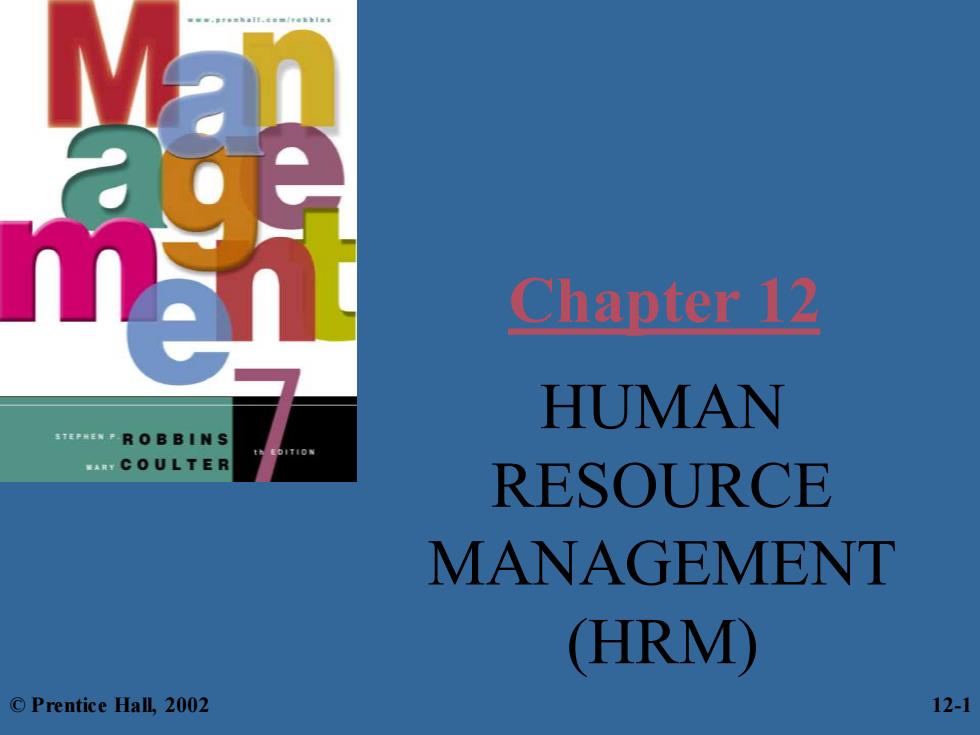
Chapter 12 HUMAN ROB B I N S COULTER RESOURCE MANAGEMENT (HRM) ©Prentice Hall,2002 12-1
Chapter 12 HUMAN RESOURCE MANAGEMENT (HRM) © Prentice Hall, 2002 12-1
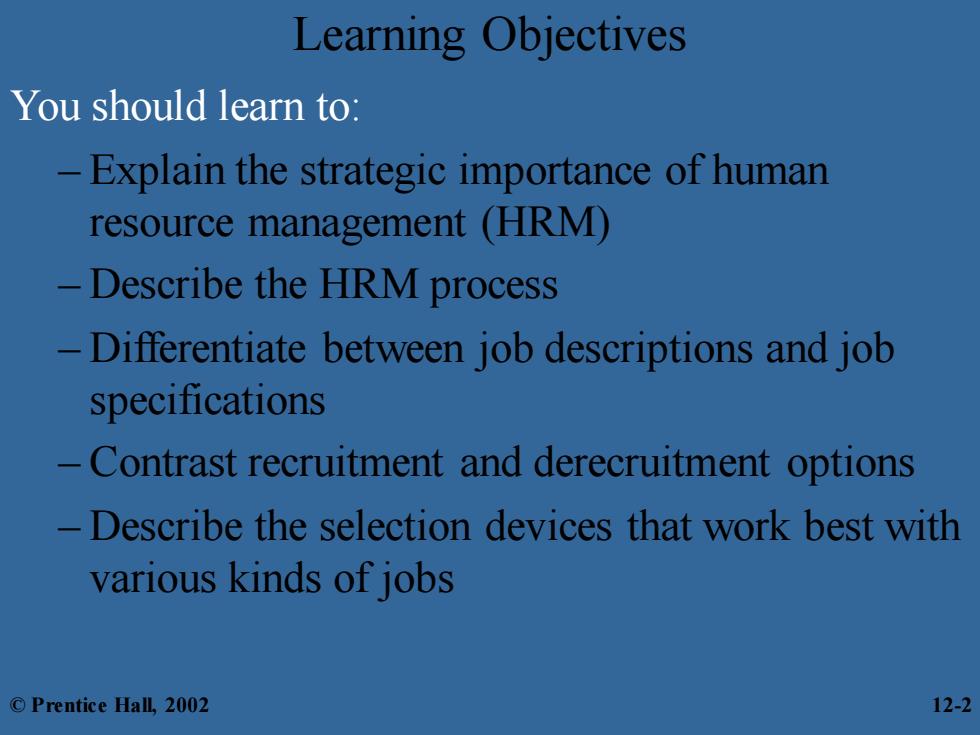
Learning Objectives You should learn to: Explain the strategic importance of human resource management (HRM) -Describe the HRM process Differentiate between job descriptions and job specifications Contrast recruitment and derecruitment options Describe the selection devices that work best with various kinds of jobs ©Prentice Hall,2002 12-2
Learning Objectives You should learn to: – Explain the strategic importance of human resource management (HRM) – Describe the HRM process – Differentiate between job descriptions and job specifications – Contrast recruitment and derecruitment options – Describe the selection devices that work best with various kinds of jobs © Prentice Hall, 2002 12-2
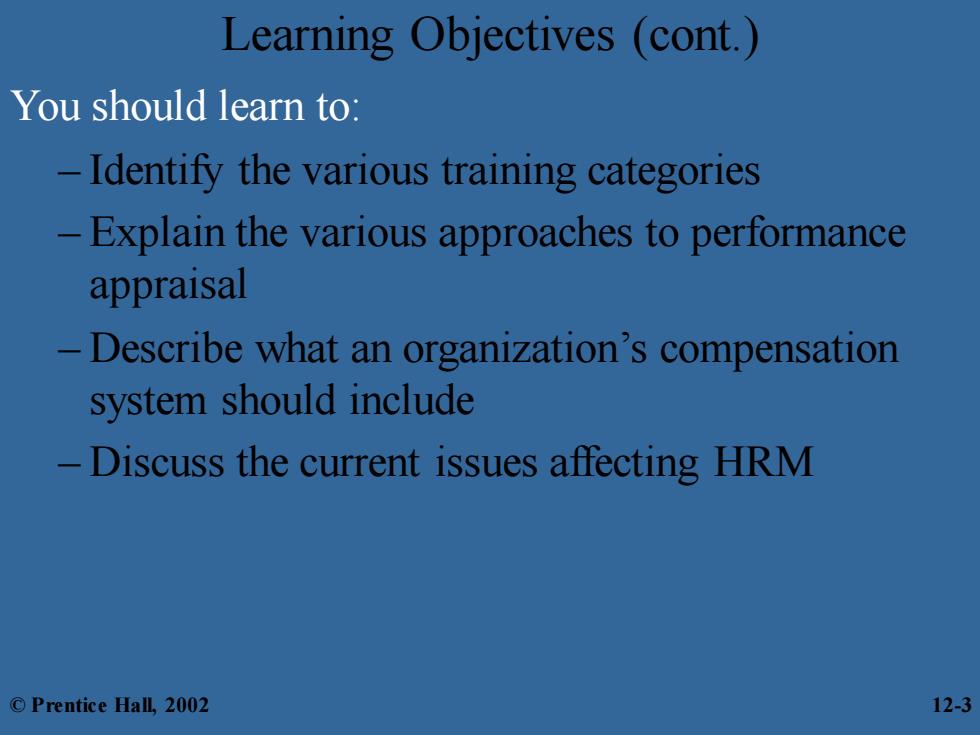
Learning Objectives (cont.) You should learn to: Identify the various training categories Explain the various approaches to performance appraisal -Describe what an organization's compensation system should include -Discuss the current issues affecting HRM ©Prentice Hall,2002 12-3
Learning Objectives (cont.) You should learn to: – Identify the various training categories – Explain the various approaches to performance appraisal – Describe what an organization’s compensation system should include – Discuss the current issues affecting HRM © Prentice Hall, 2002 12-3
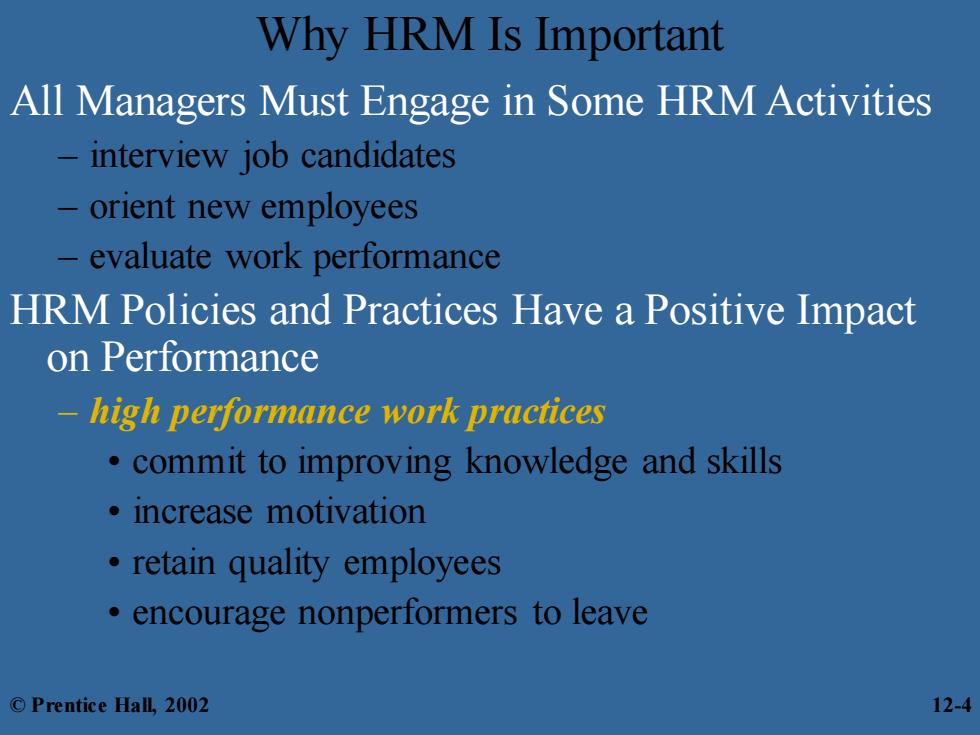
Why HRM Is Important All Managers Must Engage in Some HRM Activities -interview job candidates orient new employees evaluate work performance HRM Policies and Practices Have a Positive Impact on Performance -high performance work practices commit to improving knowledge and skills ·increase motivation retain quality employees encourage nonperformers to leave ©Prentice Hall,2002 12-4
Why HRM Is Important All Managers Must Engage in Some HRM Activities – interview job candidates – orient new employees – evaluate work performance HRM Policies and Practices Have a Positive Impact on Performance – high performance work practices • commit to improving knowledge and skills • increase motivation • retain quality employees • encourage nonperformers to leave © Prentice Hall, 2002 12-4
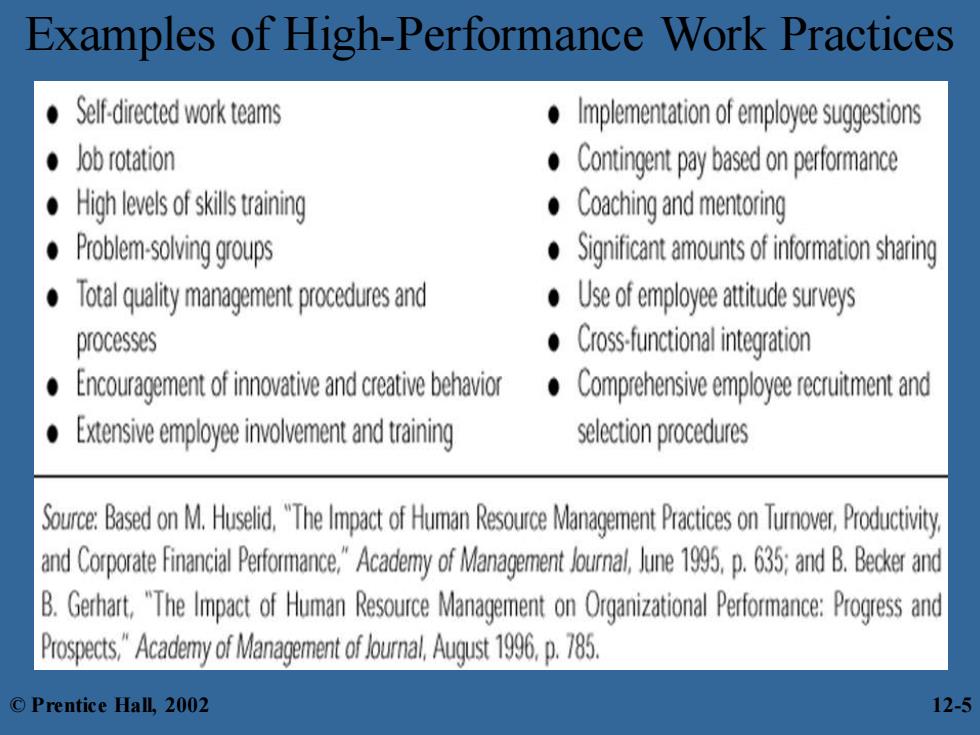
Examples of High-Performance Work Practices Self-directed work teams Implementation of employee suggestions 。Job rotation oingent pay basedn performance High levels of skills training Coaching and mentoring Problem-solving groups Sinificant amounts of information sharing Total quality management procedures and Use of employee attitude surveys processes Cross-functional integration Encouragement of innovative and creative behavior Comprehensive employee ritmntand Extensive employe involvement and training selection procedures Se:Basedn M.Huselid.The Impact of Human Resoue Management Practicesn Tumover,Prodctivity. and Corporate Financial Performance.Academyf Managemental,ne 995.p.635;and B.Becker and B.Gerhart,The mpact of Human Resource Managemetranizational Performance:Progress and Prospects,"Academy of Managementof ural.Auqust 1996.p.785 ©Prentice Hall,2002 12-5
Examples of High-Performance Work Practices © Prentice Hall, 2002 12-5